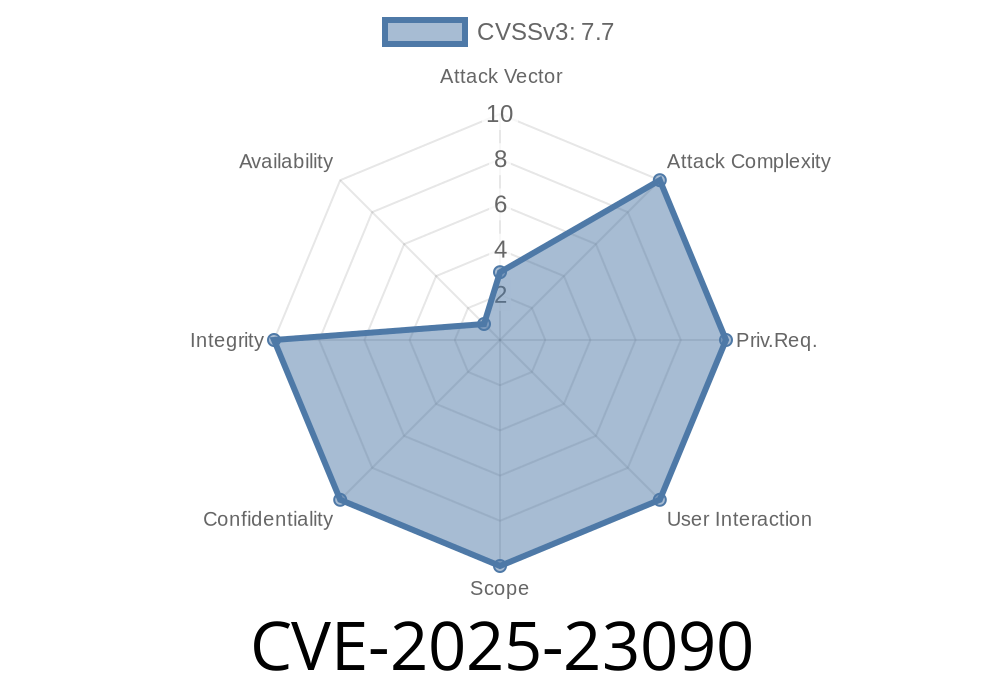A recent vulnerability, CVE-2025-23090, has been identified, which impacts Permission Model users using the --permission flag on Node.js versions 20, 22, and 23. The vulnerability revolves around the improper handling of worker threads, allowing for events to be hooked and exposing internal instances for potential malicious activities. This article aims to provide detailed information regarding the vulnerability, references to the original sources, as well as code snippets to illustrate the exploitation process.
Exploit Details
The vulnerability takes root in the diagnostics_channel utility, which is used by Node.js to collect diagnostic information and expose it to other processes. With CVE-2025-23090, an event can be hooked into whenever a worker thread is created. Consequently, this event can then be utilized to expose internal workers. Furthermore, it can even allow an attacker to fetch instances of the exposed workers and manipulate their constructors for potential exploitation.
The following code snippet demonstrates the hooking process on the worker thread
const diagnostics_channel = require('diagnostics_channel');
const worker_thread_channel = diagnostics_channel.createChannel('node.DoubleAgent.worker_thread');
worker_thread_channel.subscribe((message) => {
console.log('Worker thread message:', message);
// Malicious code could be inserted here
});
As seen in the snippet, the 'diagnostics_channel' utility is used to create a channel named 'node.DoubleAgent.worker_thread'. The 'subscribe' method is then called on that channel, which allows the malicious code to be executed whenever a worker thread event occurs. The actual payload to exploit the vulnerability would be placed where the comment "// Malicious code could be inserted here" is in the code snippet.
Impact
This vulnerability does not only impact the external worker threads but also accesses the sensitive internal workers, which can be misused for malicious purposes. By exposing the internal instances and fetching their constructors, an attacker can adopt the above-mentioned code to gain unauthorized access, steal sensitive information, or even perform unauthorized actions within the Node.js environment.
Mitigations
As of now, there aren't any known patches or updates available to fix this vulnerability. However, a possible preventive measure is to ensure that a thorough sanitization process is in place for the worker threads. Additionally, monitoring the usage of the diagnostics_channel utility and limiting its functionality is highly recommended.
Links to Original References
For additional information on the CVE-2025-23090 vulnerability, you can find the links to the original references below:
- Node.js Security Advisory
- Diagnostics Channel Utility Documentation
Conclusion
The CVE-2025-23090 vulnerability highlights the importance of rigorously assessing every potential avenue for exploitation in software, particularly when it comes to utilities with access to sensitive information. While no immediate fix is available for this issue, developers should be cautious when using the diagnostics_channel utility and ensure proper monitoring and sanitization of events. Keep an eye out for updates and patches to address the vulnerability in the future.
Timeline
Published on: 01/22/2025 02:15:34 UTC
